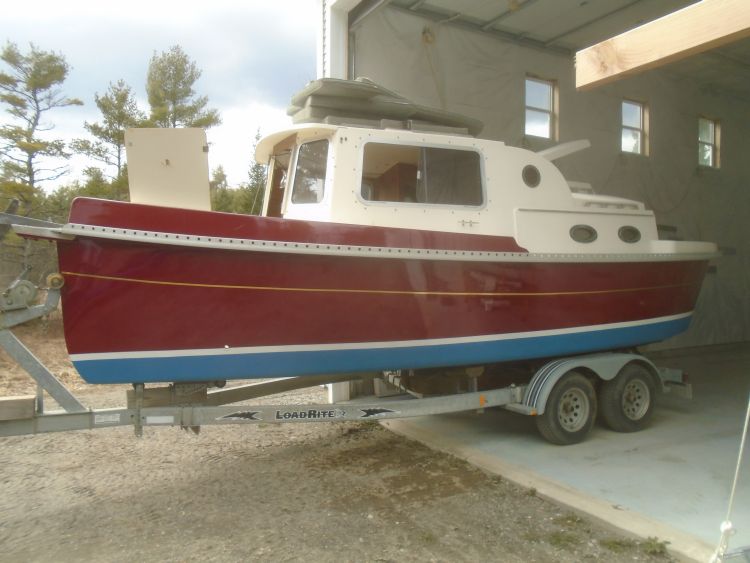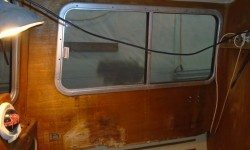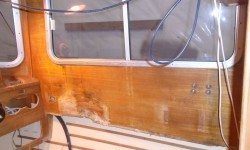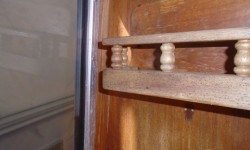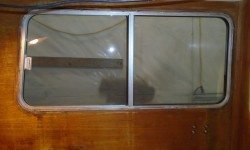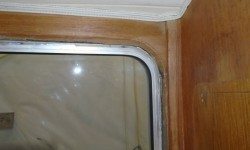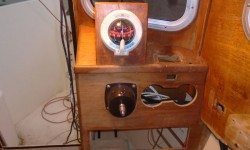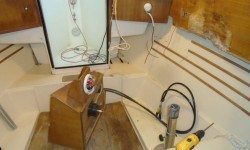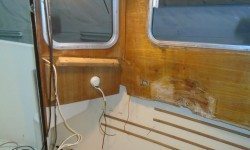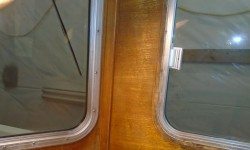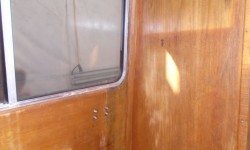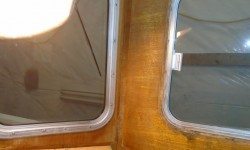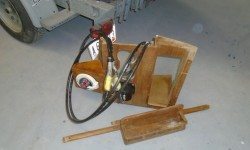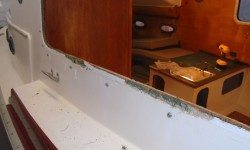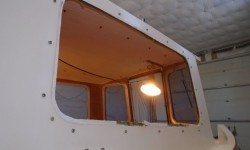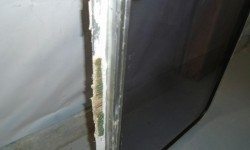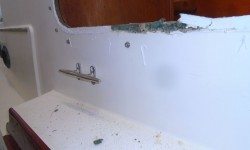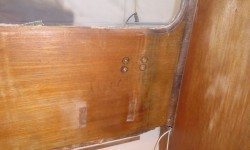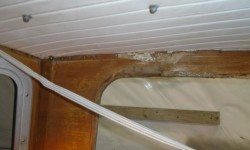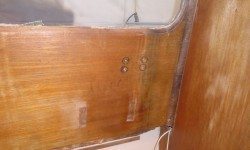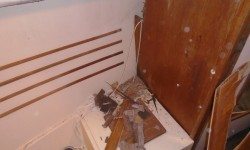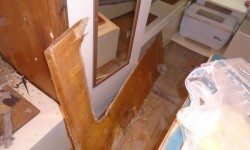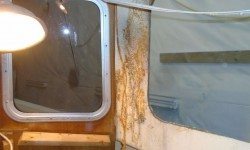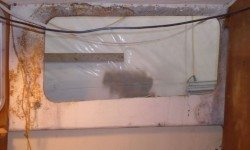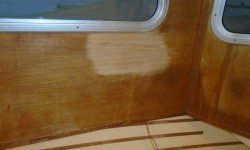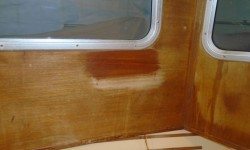January 24, 2016
Nomad 18
Sunday
The starboard panel in the main cabin/pilothouse was badly water-damaged, and would require replacement. I hoped and expected this would be the only interior panel requiring replacement.
To remove the panel, I first needed to remove the large window, so I started by removing the interior trim pieces (aluminum, and fastened through to the structural window frame with screws). This was easy enough, but I found one screw at the aft side was inaccessible thanks to a little teak rack installed on the bulkhead, so I had to remove that too. With that out of the way, I could remove the rest of the trim ring, the only thing (other than sealant) holding the window in place.
Also holding the panel in place were two pieces of solid teak trim, one on each end corner. I drilled out the bungs covering the screws and removed the trim. At this point, I also removed the helm console, which was pinning the panel in place at the forward corner, and also generally in the way and poorly designed to boot. I removed the console in one piece, with its remaining installations (helm, compass) still intact. There was much I didn’t care for about the console (especially that compass installation, yuck) and I suppose only time would tell whether I tried to work with it as is, or rebuilt it in my own image.
Outside the boat, I carefully pried the window away from the superstructure. It was well-stuck with sealant, even though apparently the sealant had not been doing its job well given the extensive damage to the interior panel. At the bottom edge of the window, the sealant was stuck so well that it actually damaged the exterior skin laminate, pulling it away from the foam core in ragged bits. The outer skin was extremely thin–about layer of mat , enough to support gelcoat–so there was zero structural strength to it in terms of resisting the sealant removal. On this boat, the inner skin was actually heavier than the outer, with at least some roving in the laminate. This was a frustrating setback, and by the time this problem presented itself the window was 90% free, and it was all I could do to complete the removal while minimizing (there was no preventing) the damage and outer laminate tearing, I managed to keep most of the visible damage within the footprint of the window’s flange, which was important as I didn’t want to get into a major cosmetic restoration of the area. I finally succeeded and set the window aside, bits of the boat still stuck in those two places.
As a final step, I removed the fasteners from a cleat mounted on the outside of the superstructure and bolted through the plywood panel. It became immediately clear that the cleat was installed with the same tenacious sealant as the window, so I left the cleat right where it was on the gelcoat rather than try to pry it off.
With all the obstructions now out of the way, I proceeded to remove the plywood interior panel, which seemed to be only secured with some non-adhesive adhesive and a few little screws. The damage to the wood was so extensive that it literally disintegrated into powdery splinters along the after side and adjacent top edge, which made removal easy although I’d hoped to have enough of the panel intact to use as a pattern (though making a new pattern would be no problem). The original panel actually passed through the head and into the aft cabin, a full eight feet, but fortunately it was so badly damaged where it met the transverse head bulkhead aft of the helm that it was easy to remove the forward portion without damaging the remainder.
Meanwhile, I decided to assess the restoration possibilities on the other panels, all of which were water-stained and had very little finish on them–and what was there was in poor condition. However, I hoped (expected) that the underlying veneer would be salvageable, appearance-wise. I found there was so little finish in place that scraping and heat didn’t have much effect, but I stripped a small test section beneath the port pilothouse window, then sanded it clean with sandpaper to expose good-looking teak veneer. I wet the bare wood with solvent to sample how it would look once refinished. I was pleased with the result, and this project loomed large on my project horizon.
Total time billed on this job today: 1.5 hours
0600 Weather Report:
10°, clear and breezy. Forecast for the day: Sunny, 27°


